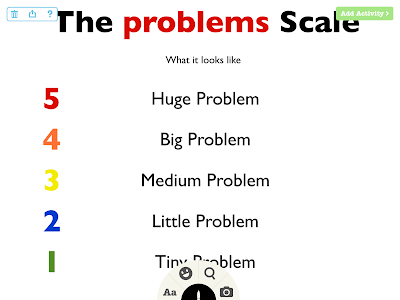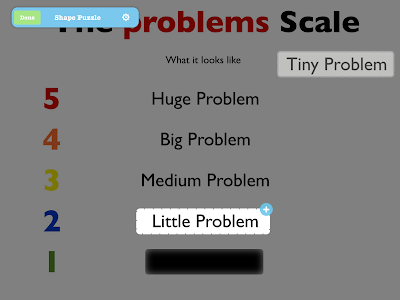Storest ($2.99 for iPad), a superlative app, is one I have been exploring in therapy with my students. The app, from the makers of the fun
Foldify series, simulates a store in ways that make unique uses of the iPad as a tool. Check it out in the video below:
Storest from
Pixle on
Vimeo.
The app works in two modes: a traditional drag-and-drop interface allowing you to shop in the different departments and pay with virtual money, and an innovative activity that requires you to print out paper items and money to play via a virtual cash register. Each item used in the cash register activity has a QR Code attached so it can be scanned by the "register," a great engagement factor for kids.
Storest is a nice app to look at using the
FIVES Criteria:
Fairly Priced: At $2.99 Storest brings you many of the features of a (generally much more expensive) play cash register, and more. It can be used flexibly in two different activities and with a wide variety of age ranges.
Interactive: The interesting interface of both activities allows students to make choices as they engage in scaffolded play, and I love apps that bring students beyond the screen to interactions in the real world. In this case, the register becomes "part of the table" and you can arrange the other aspects of the activity (departments and products) to promote interaction among students.
Visual: In the traditional mode, departments are arranged visually in categories so that students can name items and work on identifying their association. The register mode well-represents a register and visually represents the items as they are scanned.
Educationally Relevant: Consider the following classroom tie-ins and educational standards that can be addressed with the app:
-Math, obviously, with the cost of items and use of play money for counting.
This great set of cards can be used for following directions and math tasks.
-The MA Curriculum Standards in Social Studies include the following:
Kindergarten
3. Use correctly the word
because in the context of stories or personal experiences. (History)- I find that an interesting one as an SLP!
7. Use words relating to work, such as jobs, money, buying, and selling. (Economics)
8. Give examples of how family members, friends, or acquaintances use money directly or indirectly (e.g., credit card or check) to buy things they want. (Economics)
 |
| My students loved scanning the items- note the clock and "shopping baskets" used |
Speechie or Specific to clinical objectives:
-The app lends itself to working on categories and describing functions of items in a store, as well as reasons one would buy them and associations between them.
-Once printed, the "store" can be arranged in a space so that students work on
Social Thinking® concepts such as managing one's body in a group, following a group plan and playing roles of shopper and cashier. I often note my students struggle with the sequence of events when visiting a store (e.g. when to pay) as well as the arrangement of the store itself.
-The arrangement of items can be paired with post-activities such as using pictures of real supermarket aisles and describing their arrangement. I take a cue from executive function specialist
Sarah Ward and use such pictures to describe the features of each section; take the bread aisle, which can proceed from stuffing to store breads, flavored breads, rolls, english muffins, etc. EF can also be promoted by presenting real-life tasks such as buying items for a party, and monitoring time for shopping using a clock.
-Pair the app with a picture book for further context and narrative language development.
A Chair For My Mother by Vera Williams is a good one, though I am sure you can find many others.
Enjoy shopping!












